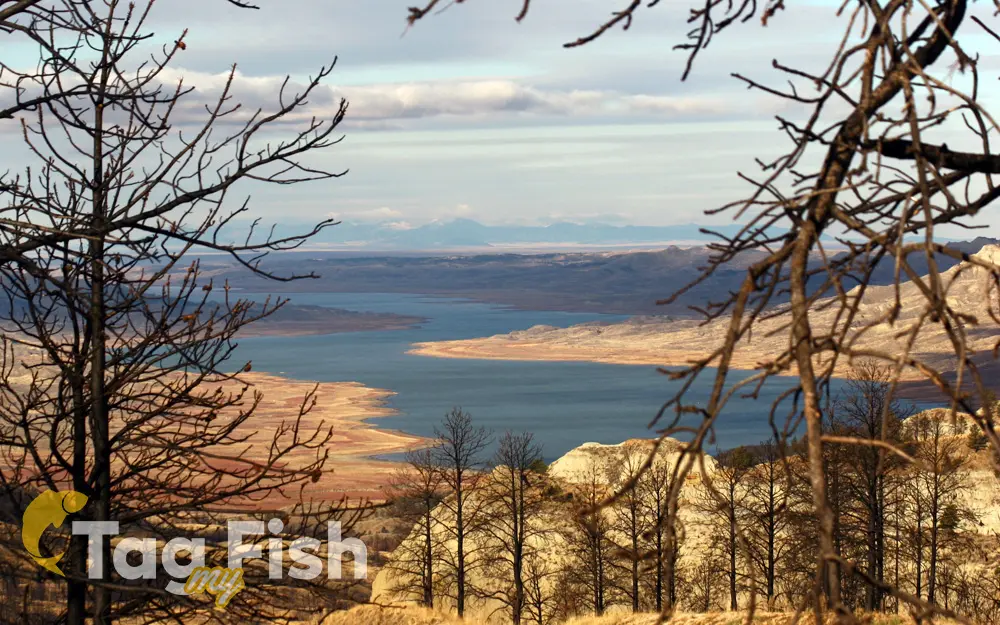Fort Peck Lake

General data
- Name: Fort Peck Lake
- Water system: Missouri River
- Water type: Artificial lake
- Progression: Missouri River -> Mississippi River -> Gulf of Mexico -> Atlantic Ocean -> Planet Earth
- Climates: Continental
- Continents: North America
- Countries: United States of America
Fort Peck Lake, or Lake Fort Peck, is a major reservoir in Montana, formed by the Fort Peck Dam on the Missouri River. The lake lies in the eastern prairie region of Montana approximately 140 miles (230 km) east of Great Falls and 120 miles (190 km) north of Billings, reaching into portions of six counties. The dam and reservoir were built in the 1930s to enhance navigation on the Missouri River, supplying enough water downstream of the dam to provide for a 9-foot deep (2.7 m), 300-foot wide (91 m) navigation channel from Sioux City, Iowa, to the mouth of the Missouri just above St. Louis. With a volume of 18,700,000 acre-feet (23.1 km3) when full, Fort Peck is the fifth largest artificial lake in the United States. It extends 134 miles (216 km) through central Montana, and its twisting, inlet-studded shoreline has a total length of some 1,520 miles (2,450 km). Along with the Missouri River, smaller tributaries such as the Musselshell River, Fourchette Creek, Timber Creek, Hell Creek and Dry Creek feed the reservoir; the latter forms the longest side arm of the reservoir, which reaches some 30 miles (48 km) southwards. The lake covers an area of 245,000 acres (99,000 ha), making it the largest in Montana by surface area, although Flathead Lake has a larger volume due to its greater depth. The reservoir is also a tourist attraction, with 27 designated recreational sites bordering its shores. Bordering nearly the entire reservoir is the 1,719-square-mile (4,450 km2) Charles M. Russell National Wildlife Refuge, which has preserved much of the high prairie and hill country around the lake. The lake is featured in the film Jurassic Park III, as part of an excavation.

 English
English
 Spanish
Spanish
 German
German
 French
French
 Serbian
Serbian
 Russian
Russian

